A short walk from the Nutella Café on Michigan Avenue, we found ourselves heading toward one of Chicago’s most beloved landmarks: Millennium Park and its centerpiece sculpture, Cloud Gate (popularly known as “The Bean”). That morning — bright, breezy, and full of possibility — we swapped syrupy pancakes for shiny reflections, people-watching, and music drifting through the air.
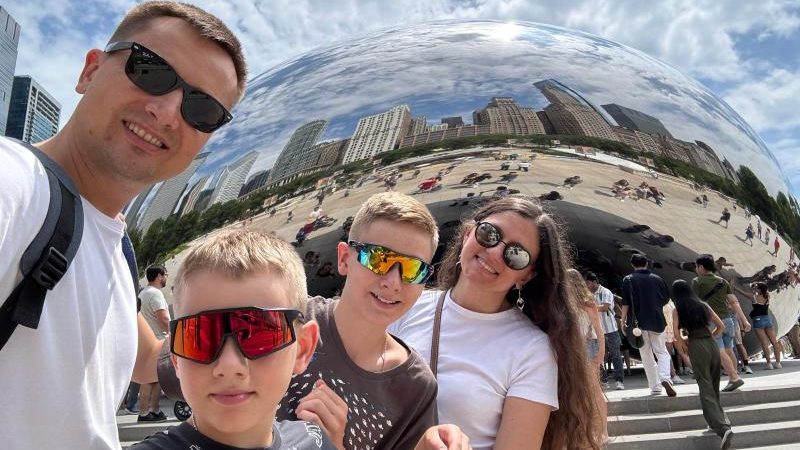
Arrival & Entry Checkpoint
After breakfast, the four of us (me, my partner, and our two teenage children) strolled eastwards toward the park. Even though Millennium Park is a public space, we noticed a security checkpoint at one of the entrances: staff asked us to open bags, scanned through briefly, and made sure nothing prohibited was entering. It was unobtrusive, but firm — a reminder that high foot traffic and events often require extra safety measures.
Once past security, we entered a verdant stretch of lawns, walkways, sculptures, and open-air gathering spots. The path led us toward AT&T Plaza, where the Bean stands, and the surrounding plaza that invites crowds, reflections, and conversations.
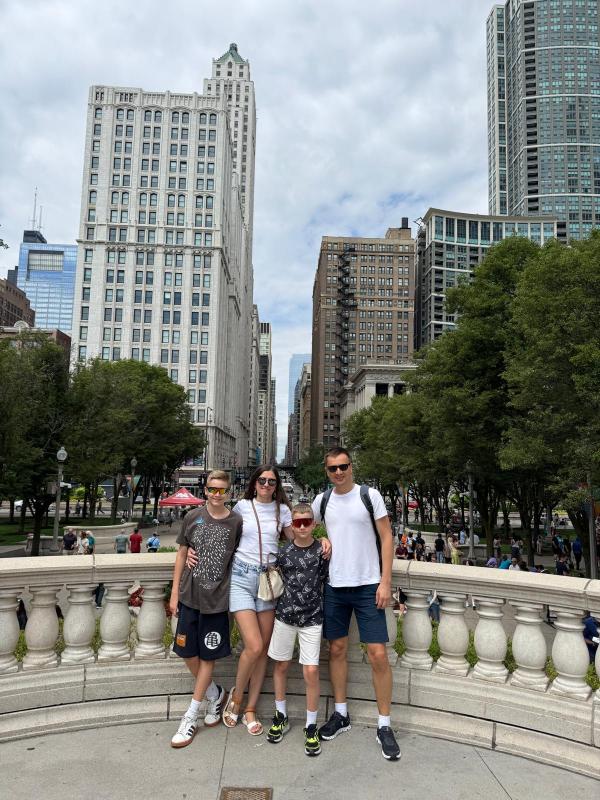
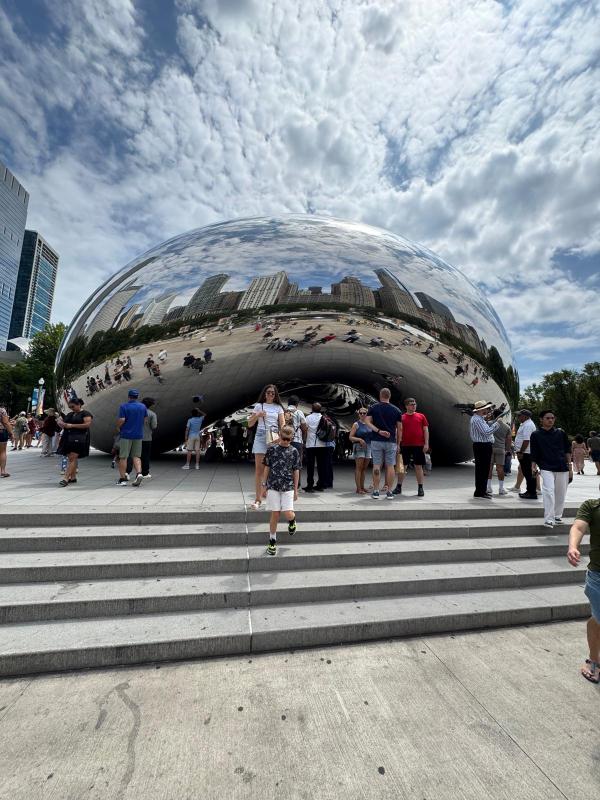
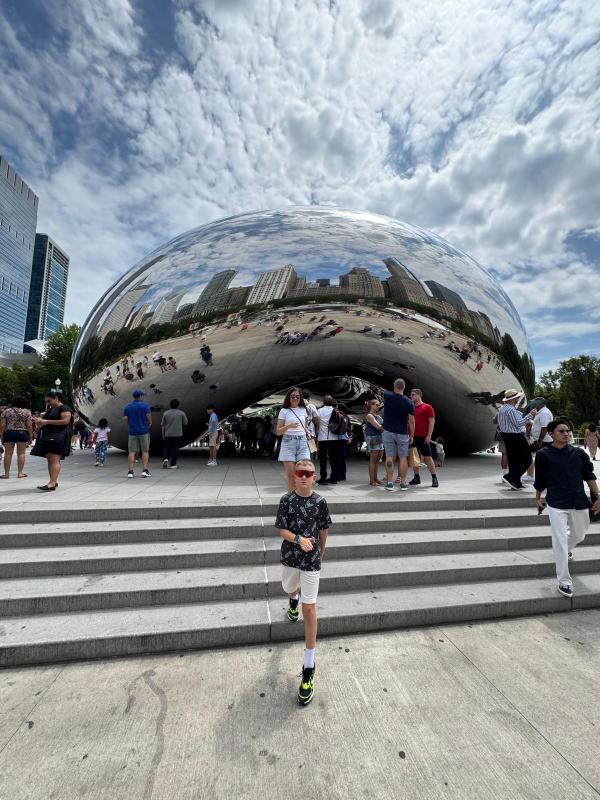
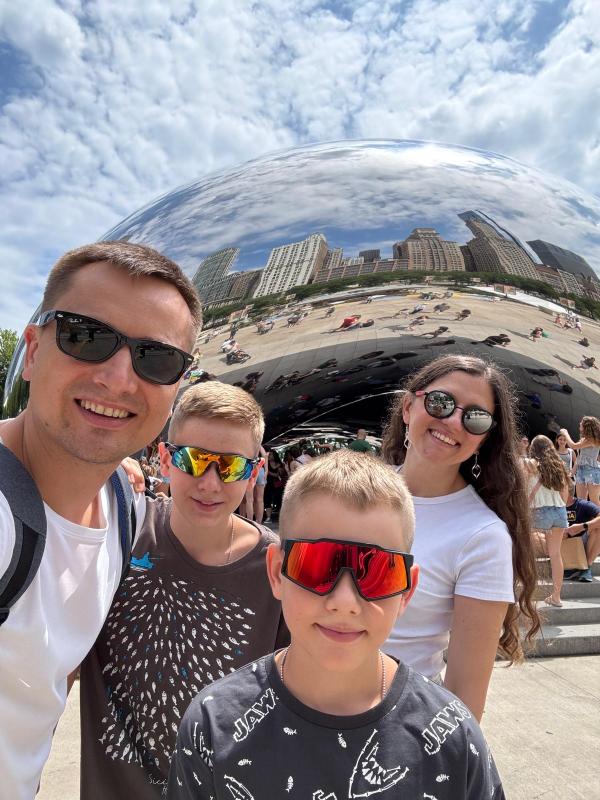
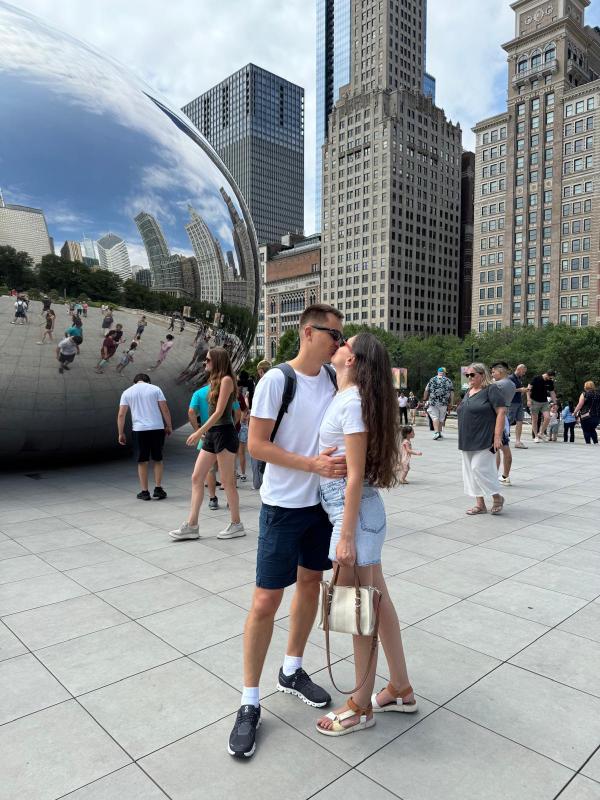
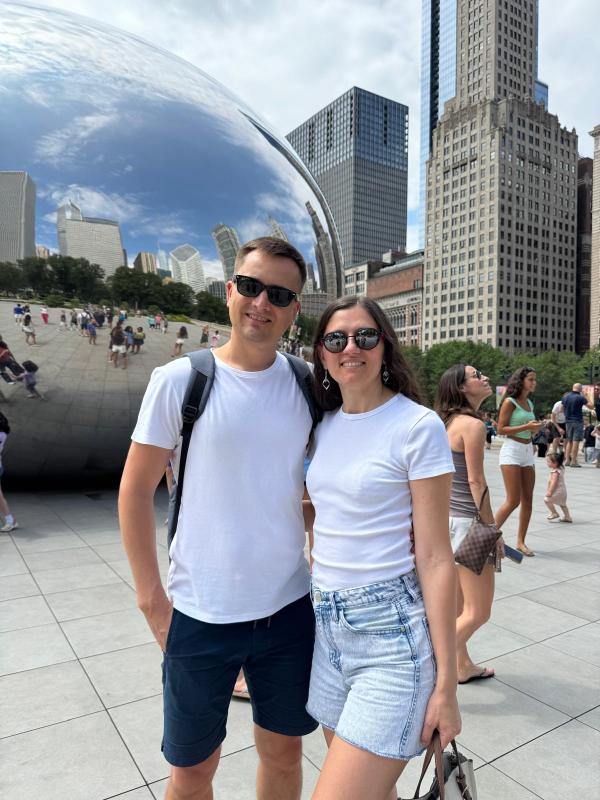
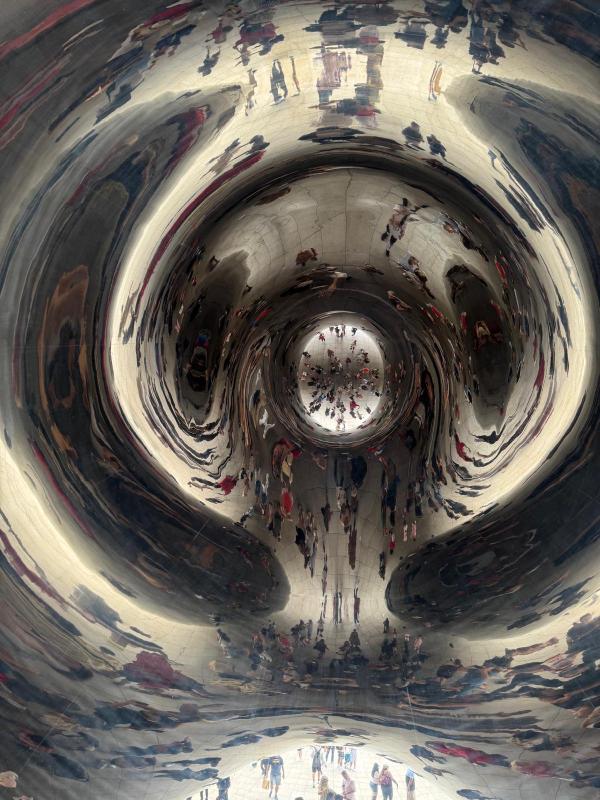
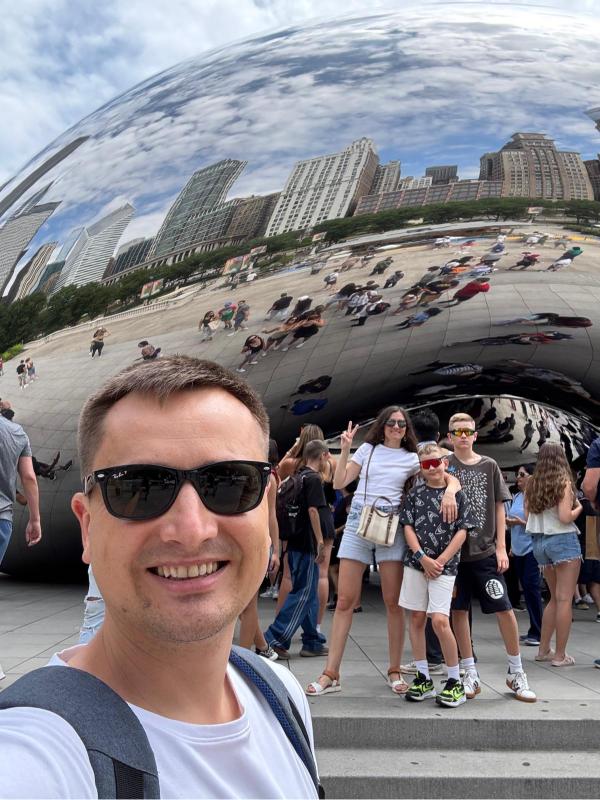
The Bean / Cloud Gate: What It’s Like
From a distance, the Bean strikes you first by its mirror-polish. Up close, you realize it’s a sculpture that encourages touch, reflection, and play. We spent perhaps half an hour wandering around, beneath its arch, peering into distorted reflections, and snapping photos of the four of us blurred into the skyline.
Some observations and highlights:
- The Bean is made up of 168 stainless-steel plates, welded seamlessly, forming that smooth, highly reflective skin.
- It weighs about 110 tons and spans roughly 66 feet (length) × 45 feet (width) × 33 feet (height).
- Underneath, there is a concave chamber (the “omphalos”) that distorts reflections in interesting ways — the underside is nearly as fascinating as the outside.
- Its reflective surface was inspired by liquid mercury, capturing the sky, the people, and the surrounding architecture all at once.
- Maintenance is constant: the surface is cleaned frequently, and twice a year receives a more intensive polishing to keep it pristine.
As we explored, visitors from all directions came by, stopping to admire the reflections, whispering to each other how “beautiful” it looked, and taking turns for selfies. One woman near us said, “Your breakfast must have been almost as pretty as this!” — we laughed, realizing that the entire morning had a playful, whimsical vibe.
History & Significance
- The Bean’s formal name is Cloud Gate, and it was designed by British-Indian sculptor Anish Kapoor.
- The project began around 2004; the park itself officially opened in July 2004, though Cloud Gate was still under construction then.
- Kapoor did not finish the final polishing until 2006, and locals were initially skeptical of a giant mirrored bean in their city. But over time, it became a symbol of Chicago.
- The total cost and complexity of the sculpture exceeded early estimates; private donors helped cover cost overruns.
- Cloud Gate was the first major outdoor public work by Kapoor in the U.S., and it has become central to Chicago’s identity in art, tourism, and architecture.
Millennium Park, as a larger public space, replaced a former rail yard and parking lot. When built, it was one of the largest “green roofs” in the U.S., covering garages and rail lines beneath.
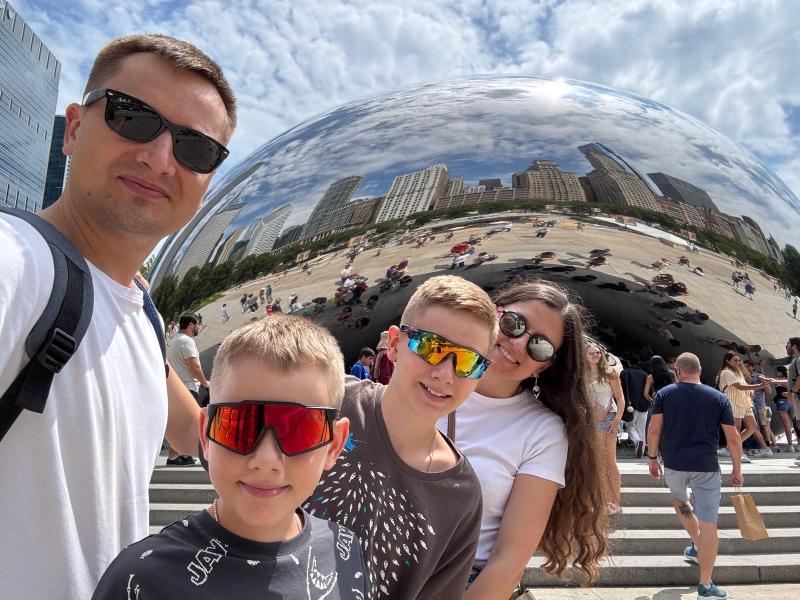
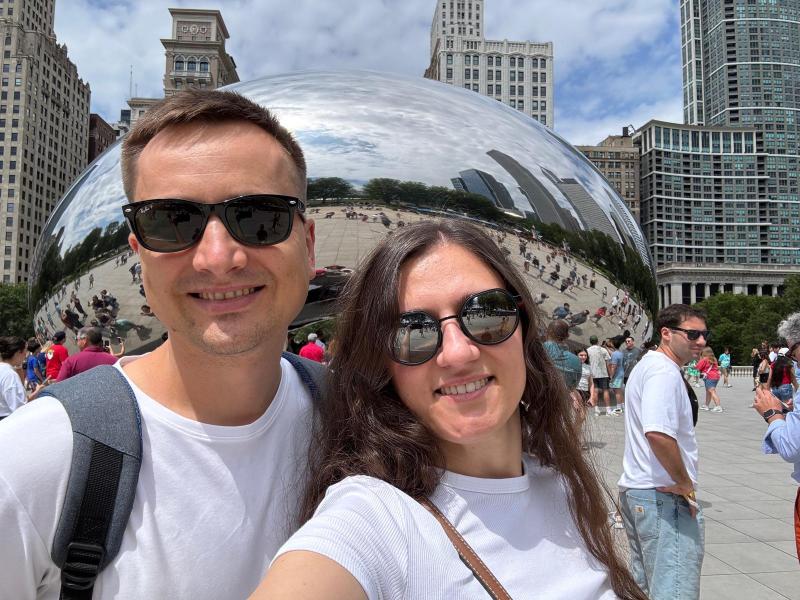
Concerts, Music & the Cultural Vibe
While we visited on a calm morning, we could hear distant rehearsals or ambient sound drifting from the Jay Pritzker Pavilion, the outdoor bandshell in Millennium Park designed by Frank Gehry.
Here’s what you should know about concert life in and around Millennium Park:
- Millennium Park Summer Music Series: Free concerts are held on Mondays and Thursdays in summer evenings, 6:30–9:00 p.m. at the Pavilion.
- Performances spotlight a mix of established and emerging artists, often with varied genres (jazz, indie, world music, etc.).
- In 2025, concerts include Yo-Yo Ma & Angélique Kidjo in Sarabande Africaine at the Pavilion (free)
- The Grant Park Music Festival is a weekly classical concert series (Wednesdays, Fridays, most Saturdays) held at Jay Pritzker Pavilion during the summer months.
- Special events like the Broadway in Chicago Summer Concert also take place at the Pavilion (e.g. August 11, 2025) with Broadway highlights.
- The Chicago Blues Festival has moved to Millennium Park in some years, giving additional music accents in June.
During our visit, though quiet, the sense of possibility — that by evening, strings or percussion might fill the air — was part of the charm. If you visit at dusk or evening, you may catch warm-up sets or casual strums from musicians getting ready.
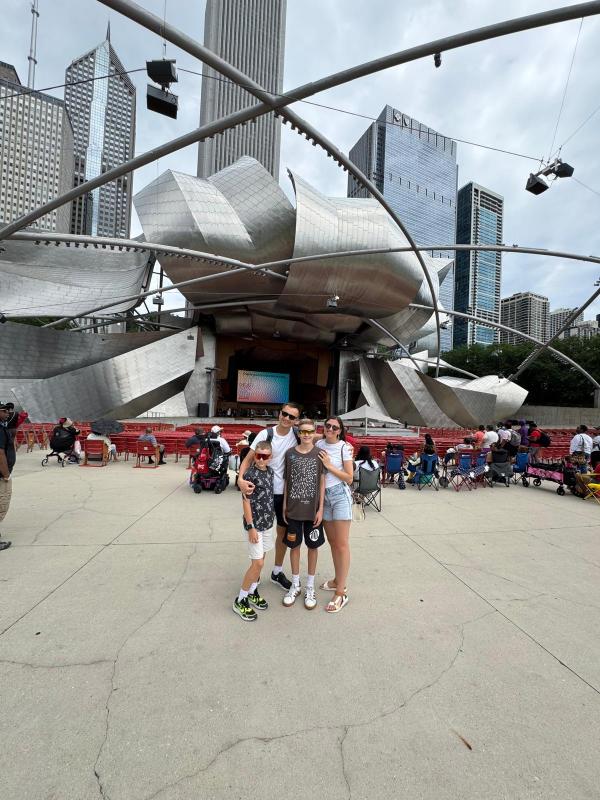
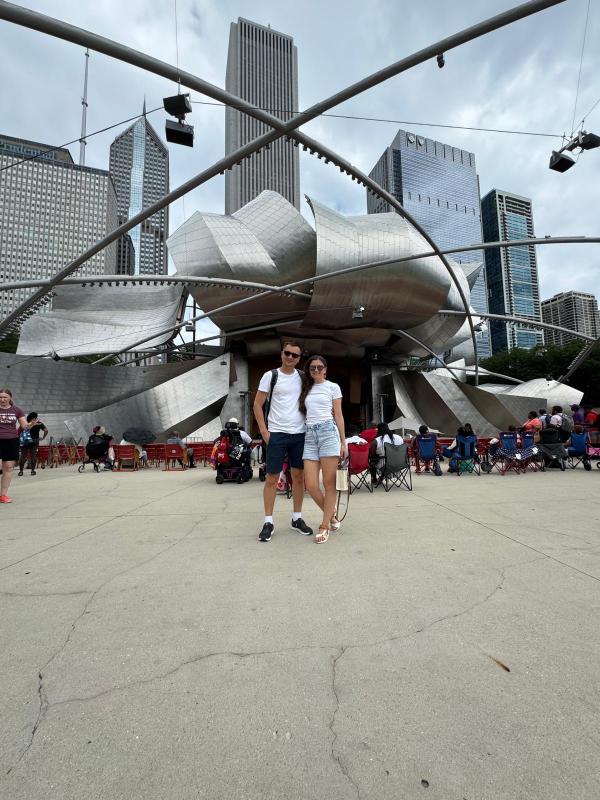
Tips & What to Expect
- Visit early in the morning or midday to avoid the largest crowds.
- Enter via any of the park’s main access points; note that during event days, some entrances may have enhanced security checks.
- For the best photos, stand across the plaza so you capture both the Bean and the skyline behind you.
- If possible, time your visit for a concert evening — bring a blanket, snacks, and enjoy free music under the stars.
- Check schedules for Millennium Park concerts, Grant Park Music Festival, and special events before your trip.
- Wear comfortable shoes — the park is expansive, with fountains, gardens, and art installations to explore beyond just the Bean.
Frequently Asked Questions about the Bean & Millennium Park
What is the Bean in Chicago?
The Bean is the nickname for “Cloud Gate,” a large reflective sculpture in Millennium Park by artist Anish Kapoor. It reflects the sky, city, and visitors in its mirror-polished surface.
Is there a security check to enter Millennium Park?
Yes — on event days, and sometimes generally, there is bag inspection and security screening at park entrances.
When are concerts held near the Bean?
Concerts at Jay Pritzker Pavilion are held during summer (typically Mondays and Thursdays, plus the Grant Park Music Festival on select nights). Many are free to the public.
What is the history of Cloud Gate?
Cloud Gate was built between 2004 and 2006, designed by Anish Kapoor, and made from welded stainless-steel plates. It was funded by private donors and has since become a Chicago icon.
Is there a fee to visit the Bean & Millennium Park?
No — access to the Bean and much of Millennium Park is free, though certain special events or concerts may require tickets.

2 Comments